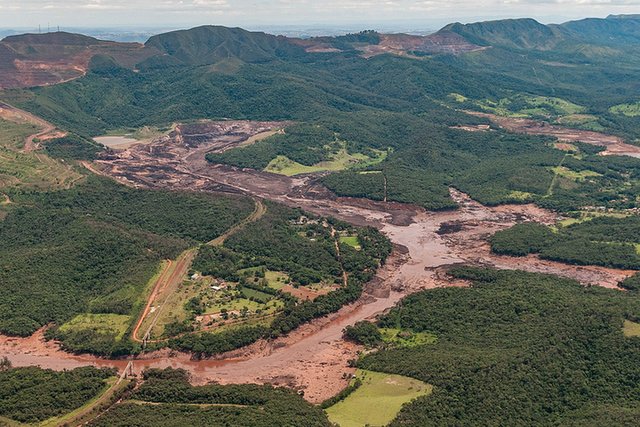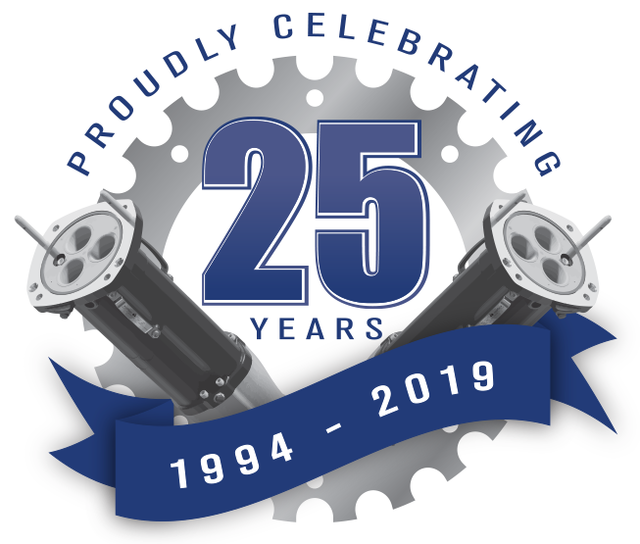COMMODITIES
Iron ore wars: the fall of Vale and the rise of Rio Tinto
In the wake of the Brumadinho dam tragedy, Vale has lost its position as the world’s top iron ore producer. JP Casey considers what contributed to its decline, and how Rio Tinto has taken advantage of its struggles to become the industry’s new iron ore leader.


V
ale has finally lost its position as the world’s largest iron miner. The Brazilian mining giant saw its production crater in 2019, as the tragic impacts of a collapsed tailings dam at its Brumadinho operation were felt across the iron ore sector. 300 people were killed or left missing by the disaster, sparking internal investigations and external outrage as Vale’s reputation crumbled.
While the human cost of the disaster is the most significant impact, there have been a number of financial and operational effects for Vale, and few of them positive. The miner’s total iron ore output was 301,972 million tonnes in 2019, 21.5% lower than in 2018, with a decline of 55.2% at its Southern System projects leading the way. This decline has hampered the company’s ability to both aid recovery efforts in the wake of the disaster, and rebuild its own shattered mining empire, opening the door for a new leader in the iron ore sector.
Anglo-Australian miner Rio Tinto has filled this gap, posting annual production totals of 327,400 million tonnes at its Pilbara operations in Western Australia last year. While its new position owes much to the struggles of Vale, Rio Tinto deserves credit for its own initiatives, notably investing in technologies such as automation, and making consistent investments and developments at its mines to reassure stakeholders and backers that its projects are safe investments. The contrast between Vale and Rio Tinto, therefore, is not just one of accidents versus security, but inconsistency versus confidence, which have helped reshape the iron ore landscape.
More than half of the country’s coal mines are managed by pro-Russian separatist militia.Credit: DmyTo/Shutterstock.
More than half of the country’s coal mines are managed by pro-Russian separatist militia.
Credit: DmyTo/Shutterstock.
Vale’s economic and political struggles
The collapse has led to closures across Vale’s operations, with internal and external investigations into the safety of the company’s operations taking an immediate toll on production. Operations such as the Brucutu mine in the province of Minas Gerais, which has an annual production capacity of more than 30 million tonnes of ore, were suspended, and while Vale stressed that these short-term closures would not significantly impact end-of-year production totals, these moves introduced uncertainty and disruption to a company whose operations had historically been able to work smoothly.
In its financial reports for the final quarter of 2019, Vale conceded that “production volumes will depend mostly on the granting of external authorisations to resume halted production,” as the company finds itself dependent on bodies such as state and federal governments to be granted permission to return to many of its core activities.
“External bodies refused to extend safety certifications at 17 of the miner’s projects.”
While Vale plans to overcome these closures in the short-term, including plans to reopen 60 million tonnes per annum of production in Minas Gerais alone by 2021, the disaster sparked a series of operational overhauls to Vale’s mines that could impede production for much longer.
Two months after the disaster, independent auditors raised the warning level at three more Vale dams, finding their safety standards below those required in new mining laws , and just a few days later external bodies refused to extend safety certifications at 17 of the miner’s projects. These rulings have dashed hopes for Vale to quickly return its production totals to pre-disaster levels, and will force the miner to adopt much-needed safety reforms, which will ultimately take time to properly implement.

The aftermath of the collapsed tailings dam at Vale’s Brumadinho project. Image: IBAMA
A culture of alleged deception
These operational changes have been compounded by the legal action levied against the company for its role in the disaster. A total of 16 current and former executives, including former CEO Fabio Schvartsman, have been charged with homicide, with prosecutors alleging that the disaster at Brumadinho was partially triggered by the company’s insistence that internal inspectors falsify safety performance reports at the dam to ensure it received external approval to operate.
German safety firm Tüv Süd, contracted to carry out this work and also implicated in the court cases, has agreed with this assessment. While the cases have not yet reached a verdict, the episode reveals a culture of alleged deception and a disinterest in safety embedded at the top of the Vale hierarchy, which will have done nothing to reassure investors of the miner’s intentions, and help it recover.
“Brazilian courts have frozen $2.89bn worth of the company’s assets in response to the crisis.”
Brazilian courts have frozen $2.89bn worth of the company’s assets in response to the crisis, a move which will aid in recovery and restoration efforts across the province, but has further impeded Vale’s ability to mount an economic comeback of its own.
There is also an environmental aspect to Vale’s recent struggles, especially when compared with rivals such as Rio Tinto. The majority of Vale’s operations are in Brazil, which has been plagued with heavier than expected rainfall over the past year, an issue which does not affect operations such as those belonging to Rio Tinto in Australia’s Pilbara region.
Vale estimates that heavy rains caused its operations at its Southern and Southeastern Systems to lose one million tonnes of iron ore, as 150 people have been killed or reported missing as “extreme rainfall events”, where more than 100mm of rain falls within 24 hours, have hit the Brazilian east and south-east.

AusProof is celebrating 25 years of business in Australia in 2019.
Innovation at Rio Tinto
Rio Tinto’s year, meanwhile, was one of consistent production and sustained growth. The company’s growth in the iron ore sector was underpinned by the first results from its long-standing commitment to automation, and the integration of new technologies at its operations, with the Pilbara becoming something of a testing ground for new mining machinery.
In June, the company began operations at its AutoHaul railway system, an autonomous train line covering 1,500km of track in Western Australia; trains can carry up to 28,000 tonnes of iron ore across journeys averaging 800km, and the successful use of the scheme has yielded a number of improvements to operational efficiency.
“The average journey time across the Pilbara has been reduced by an hour, with average train speeds increasing by up to 6%.”
Rio Tinto claims that by removing the need for driver shift changes and eliminating human control and error from the scheme, the average journey time across the Pilbara has been reduced by an hour, with average train speeds increasing by up to 6%. These improvements have made journeys more efficient, and enabled the company to aim for more ambitious production targets, confident that expanded production won’t be hampered by transport bottlenecks.
These results are especially significant for the company, whose final investment in AutoHaul ballooned to some 180% of the original budget. The trains were also deployed four years later than originally planned, so these improvements in efficiency have been a long time coming for Rio Tinto, which looks set to reap the benefits for the foreseeable future.

Rio Tinto’s investment in its operations, despite some delays, has proven a source of consistent innovation. Image: Phil Schoville
Consistency of operation and investment
The company has also benefited from considerably more consistent operations than at Vale, which has, in turn, improved investor confidence in the miner’s ability to deliver on its promises. As of its financial reports for the final quarter of 2019, Rio Tinto was on track to produce the first iron ore at its new Koodaideri mine, a massive $2.6bn investment which will use many of the intelligent and automated processes trialled in AutoHaul to deliver an initial 43 million tonnes of iron ore a year, which could later be nearly doubled to 70 million tonnes.
This image of consistency was further improved by the company’s $749m investment in its Tom Price operations, to fund greater exploration work, the construction of a new crusher, and the installation of autonomous technology at the truck fleet of its Western Turner Syncline Phase 2 mine. While Vale has had to spend the last year looking backwards, reassessing its operations and dealing with the fallout of the Brumadinho disaster, Rio Tinto has been able to continually build towards a productive and profitable future.
“Net cash generated increased from $11.8bn to $14.9bn.”
The miner has also been aided somewhat by the Brumadinho collapse, which contributed to a sharp increase in the world’s iron ore prices, as its largest producer was suddenly thrown into turmoil. Rio Tinto’s own reporting notes that iron ore prices were 37% higher by the end of 2019 than 2018 as the global supply began to dry up following the Brumadinho disaster, which enabled the company to turn a significant profit despite production declining in 2019.
The miner’s iron ore production fell by 3% compared to 2018, but its return on capital employed increased from 19% to 24%, while net cash generated increased from $11.8bn to $14.9bn over the same period.
As a result, a combination of operational consistency and good fortune, in relation to the global iron ore market and weather patterns, contributed to Rio Tinto’s rise to become the world’s largest iron producer, at the expense of Vale, which struggled significantly with all of these factors.

AusProof is celebrating 25 years of business in Australia in 2019.
